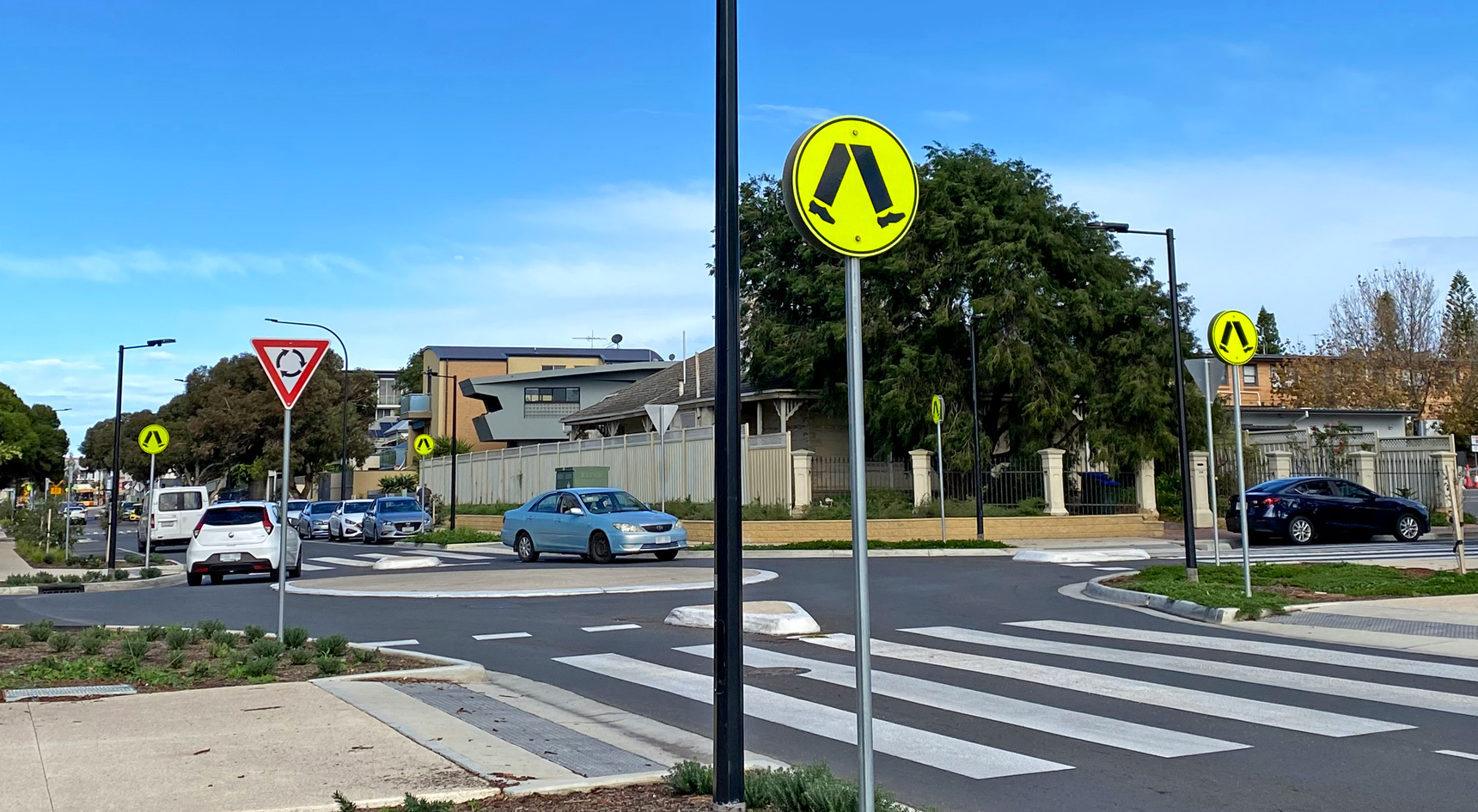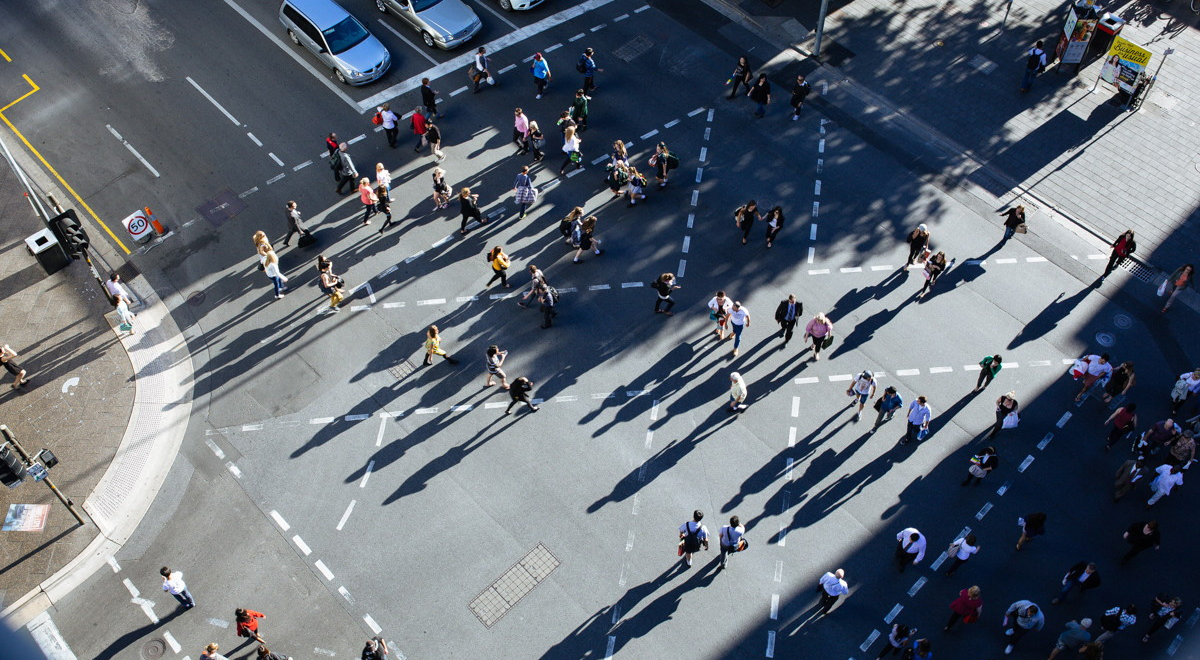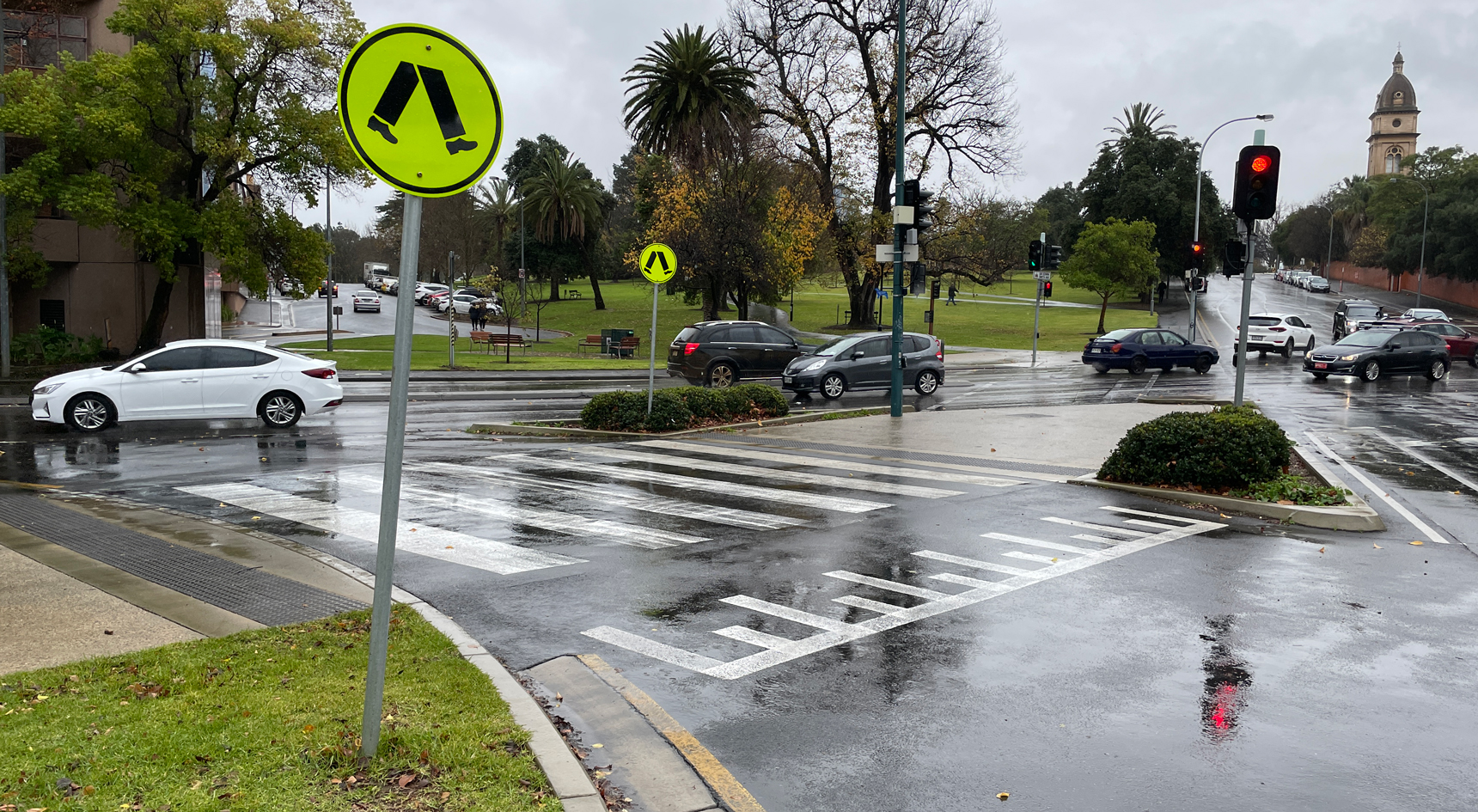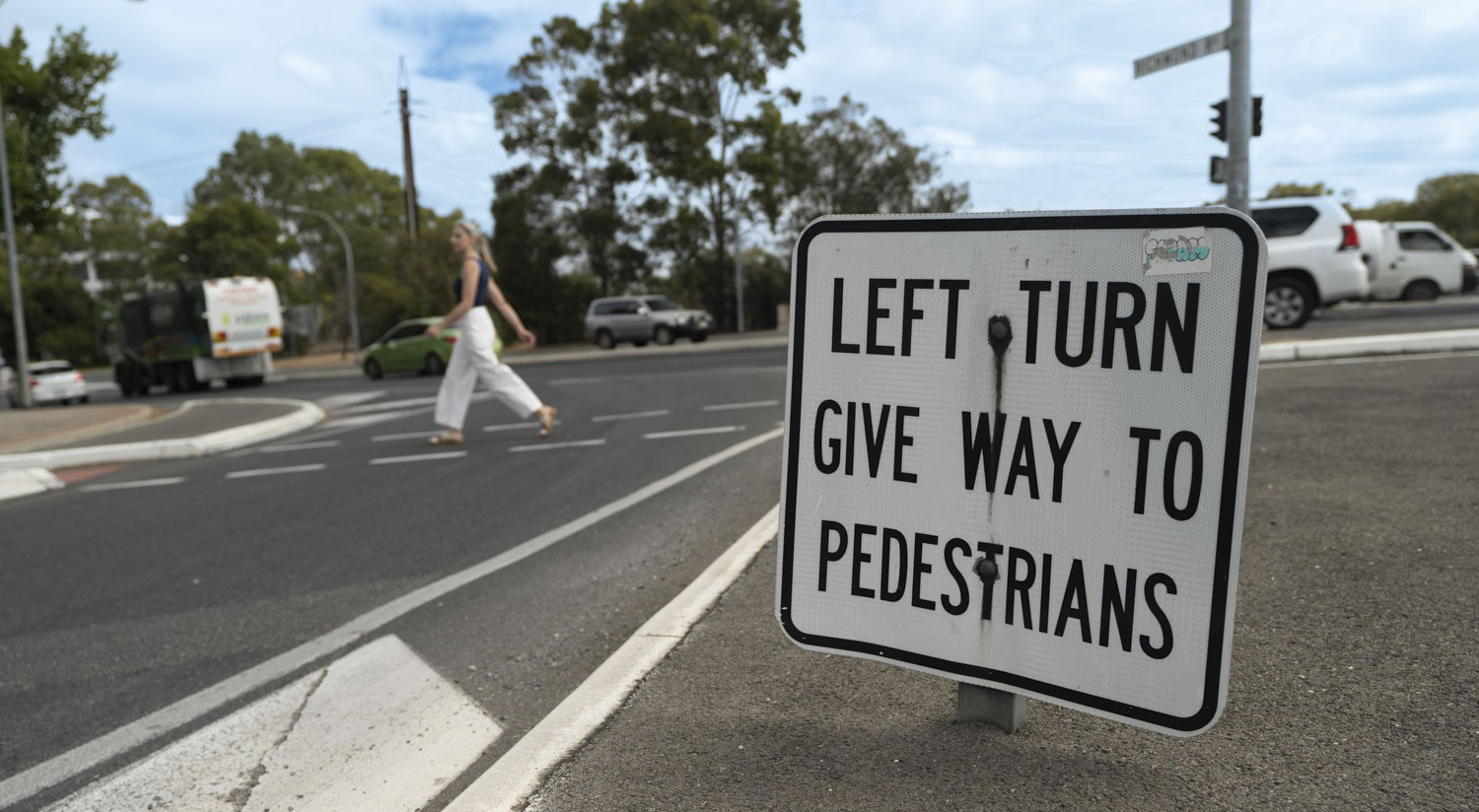By Andrew Rasch
Published: Thursday, June 29, 2023
Picture this scenario: You’re approaching an intersection to turn left at a slip lane. Your brain quickly sifts through the things to check before you can do it safely. You know the drill – slow down, check for cars, give way to anyone entering the road and prepare to brake.
But what if there’s a pedestrian on the footpath ready to cross the slip lane in front of you? Do you need to stop and give way, or do they have to wait for you? More on that later.
Pedestrian deaths this year
Nine pedestrians have lost their lives on South Australian roads this year, (as of 29 June 2023), accounting for about 15% of total road fatalities. This is nearly twice the number for the same time last year when five pedestrians lost their lives.
Pedestrians are particularly vulnerable on our roads, so we have specific infrastructure to reduce their likelihood of harm. We’ve put the spotlight on three road-safety measures and how drivers can navigate them safely.
Pedestrian-priority roundabouts
Last year, two pedestrian-priority roundabouts were installed in Henley Beach – the first of their kind in South Australia. Situated on Military Road at North Street and South Street, these roundabouts include a zebra crossing spanning each of the four entry/exit roads. As their name suggests, they’re designed to give priority to pedestrians.

RAA Senior Manager Safety and Infrastructure Charles Mountain says the roundabouts increase pedestrian safety by reinforcing where drivers must give way to pedestrians.
“There’s also improved pedestrian access, and traffic needs to slow down at the conflict points, improving safety,” Mr Mountain says.
At a pedestrian-priority roundabout, motorists must give way to any pedestrians or cyclists who are on or entering the zebra crossings. Once clear, motorists can then enter or exit the roundabout.
If you’re using one of these roundabouts, slow down and pay extra attention to pedestrians and other vehicles, particularly before entering or exiting the intersection. Even though there is usually enough space for one passenger vehicle, if a longer vehicle is giving way to a pedestrian before exiting, it may temporarily block other traffic at the roundabout.
Scramble crossings
Do you remember playing Red Rover at school? When someone from the opposing team shouted, “Red Rover, all over!”, everyone would make a mad dash to the other side. A scramble crossing might bring back those memories.
The first of its type in South Australia was built more than 15 years ago at the Pulteney Street and Rundle Street intersection. At scramble crossings, there’s a separate signal phase that stops all vehicle traffic and allows pedestrians to cross the intersection in any direction, including diagonally, at the same time.

“Although it can mean longer wait times for drivers in some circumstances, scramble crossings reduce the risk of collisions between people walking and left or right-turning vehicles,” Mr Mountain says.
Some motorists at scramble crossings may instinctively start moving when they see the traffic lights turn red for cross traffic. Remember, your traffic light is red too, and you need to wait for the pedestrian phase of the cycle to end. Pedestrians also need to wait for their pedestrian-only phase and not attempt to cross when a traffic phase is running.
Wombat crossings
You’ve probably heard of zebra crossings but what about wombat crossings? They’re like zebra crossings but are installed in conjunction with a raised section of the road with white parallel lines on the raised section and perpendicular white lines (think piano keys) either side.

They can be on a straight section of the road or in a slip lane. For example, there’s a wombat crossing at the corner of Brougham Place and Sir Edwin Smith Avenue in North Adelaide, near the Women’s and Children’s Hospital. Wombat crossings have yellow pedestrian crossing signs and a 40km/h speed limit to help pedestrians and cyclists safely get across. If you’re approaching a wombat crossing, drive at an appropriate speed and prepare to stop if pedestrians or cyclists are about to use the crossing or are currently on the road.
Pedestrians and the law
Back to our earlier question: do you have to give way to pedestrians at a slip lane? The short answer is yes.
The Australian Road Rules state that drivers turning left at a slip lane (a left turn lane separated by a traffic island) must give way to pedestrians or cyclists on the slip lane or about to cross. The rule applies whether the slip lane has a wombat or zebra crossing or not.
The exception to this is at slip lanes with signalised crossings, where pedestrians are faced with a red ‘don’t walk’ symbol while vehicles can pass through. At these locations, pedestrians can only cross the slip lane when faced with a green ‘walk’ symbol, and vehicles are faced with a red arrow.
Failing to give way to pedestrians and cyclists at a slip lane, or any pedestrian crossing, is unlawful and dangerous, and it could leave a dent in your bank balance. Break the rule and you could be fined $476, plus a $94 Victims of Crime levy, and handed three demerit points.

Four tips for drivers to help make pedestrians safer
- Pedestrians can be unpredictable, so slow down, avoid distractions and prepare for sudden movements, particularly at night.
- Don’t assume a pedestrian has seen you. Try to make eye contact, stop and wave pedestrians through at locations where they have priority.
- Be extra vigilant around school crossings and be aware of children darting onto the road, especially when they’re obscured by vehicles and other objects.
- Think of safety when buying a new vehicle; if you can, choose features such as autonomous emergency braking and other pedestrian-friendly technologies.